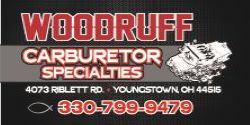- Local time
- 12:47 PM
- Joined
- Aug 24, 2015
- Messages
- 813
- Reaction score
- 1,623
- Location
- West Palm Beach, FL
I apologize in advance for the length of this initial post, but I want to provide a summary of the background and starting point for this refresh.
I recently pulled the engine and transmission out of my 1967 Plymouth Satellite for inspection, cleanup and to address some budding issues. I hope some of the resident experts will follow along and chime in as I’m sure I will have questions and be seeking advice. I have a busy day job and other pressing needs around the house/property so my progress may be slow at times, but hopefully you’ll stick with me as I go through it.
This is the original drivetrain to the car which is the high performance “H” code 383 4 bbl, dual exhaust setup backed up by a 727 and a 742 case 3.23 SG. The factory spec for the engine is 10:1 CR, but those specs are known to be “optimistic”. I rebuilt the engine in 1990 while also restoring the car and it has been in the car running since 1992. I drove it from W. Palm Beach, FL to Indy and back for the Mopar Nats in 1993 and 1995 without any issues. Through most of the ‘90’s I also drove it around to car shows in Orlando, Melbourne and Ft. Lauderdale and we still make an annual trek to Daytona Beach. On these trips, it’s not uncommon for me to cruise with traffic on I-95 at around 80 mph, ~3700 RPM without concern. Oil pressure and coolant temp run very steady.

I’m not a trained mechanic, but a decent hack and the FSM was my guide for rebuild. There are many things I have learned since, mostly on this forum, so mistakes were made and lessons learned, but the engine has run decently for over 30 years and 30+k miles. I don’t have a good point of reference for the power level as this has been the only big block car I’ve really driven. My motivation for going through it again is to address what I think (hope?) are minor issues that have cropped in the last few years, clean it up again and do a better job of documenting the setup than I did the first time.
Here is where it’s at after the 90’s rebuild and some later upgrades.
A few years later it overheated on the way home from work due to a stuck thermostat. Unfortunately, I wasn’t watching the gauges and didn’t know anything was wrong until it blew the lower radiator hose off and dumped all the coolant. I limped it along another mile or two until I got into civilization so I could find a phone to call for a tow. It was barely running when I pulled off. I reattached the radiator hose and got some help at a nearby house to refill it with water. It would turn over easily, but would not fire. I started worrying I had hurt it and got it towed home. I later found that the heat/steam under the hood had killed the coil. Replaced that and it was back running without any noticeable issues.
Fast forward to the 2020’s. Life is busier and I don’t drive it as often, especially during the hot, rainy S. FL summers. Two summers ago I started noticing what sounded like a lifter tick after the car sat for several months. It would go away once I got it out on the road and opened it up but would return again if I let it sit without starting for a few months. This was the first issue I noticed. More recently, I started seeing some oil smoke in the exhaust, particularly on startup. Finally, the engine paint is getting faded and starting to flake off the lower sides of the block. I finally decided to pull it out and start going through it to address these issues and anything else I might find.
I will detail my inspections and observations in the following posts.
I recently pulled the engine and transmission out of my 1967 Plymouth Satellite for inspection, cleanup and to address some budding issues. I hope some of the resident experts will follow along and chime in as I’m sure I will have questions and be seeking advice. I have a busy day job and other pressing needs around the house/property so my progress may be slow at times, but hopefully you’ll stick with me as I go through it.
This is the original drivetrain to the car which is the high performance “H” code 383 4 bbl, dual exhaust setup backed up by a 727 and a 742 case 3.23 SG. The factory spec for the engine is 10:1 CR, but those specs are known to be “optimistic”. I rebuilt the engine in 1990 while also restoring the car and it has been in the car running since 1992. I drove it from W. Palm Beach, FL to Indy and back for the Mopar Nats in 1993 and 1995 without any issues. Through most of the ‘90’s I also drove it around to car shows in Orlando, Melbourne and Ft. Lauderdale and we still make an annual trek to Daytona Beach. On these trips, it’s not uncommon for me to cruise with traffic on I-95 at around 80 mph, ~3700 RPM without concern. Oil pressure and coolant temp run very steady.
I’m not a trained mechanic, but a decent hack and the FSM was my guide for rebuild. There are many things I have learned since, mostly on this forum, so mistakes were made and lessons learned, but the engine has run decently for over 30 years and 30+k miles. I don’t have a good point of reference for the power level as this has been the only big block car I’ve really driven. My motivation for going through it again is to address what I think (hope?) are minor issues that have cropped in the last few years, clean it up again and do a better job of documenting the setup than I did the first time.
Here is where it’s at after the 90’s rebuild and some later upgrades.
- Block bored 0.030” over
- Original forged crank ground 0.010”/0.010” on the journals
- Original rods with ends resized
- New +.030 pistons – believed to be Silvolites, but I can no longer find the parts list from the machine shop.
- Melling high volume oil pump
- Double roller timing set
- Cam is Comp Cams 268H-10 grind with 0.454” lift degreed at the recommended 106 intake center line
- Valve springs are the CC recommended CC 926 springs with damper springs
- Rocker arms and shafts are original
- Heads are the original 516 castings milled 0.010” with 1.60” hardened exhaust valve seats installed – wish I had known then that these could be opened up to 1.74” exhaust
- Composition head gasket was used in place of the original steel shim gasket
- Heads were not cc’d nor did I think/know to measure the piston to deck distance so CR is unknown, but cylinder pressures were generally in the 145-150 psi range which is in spec for this engine.
- Bronze valve guides were installed and a 3-angle valve job was performed
- Intake is the original cast iron 4-bbl unit
- 68-69 HP manifolds replaced the original log manifolds
- An H-pipe was added to the dual exhaust with hemi mufflers and GTX tips out back
- The original Carter AFB 4299S was replaced in the mid 90’s with a new 625CFM Carter AFB with electric choke topped by the original dual snorkel air cleaner
- I added a Pertronix II kit to replace the points in the mid 2000’s
- The original 727 was rebuilt by a local builder to factory specs while I did the engine. A few years later I added a shift kit and TCI Saturday Night Special 1,600-2,000 Stall Torque Converter to help wake up the bottom end
- Other relevant options are PS, Bendix 4-piston disc brakes and A/C (non-functioning)
A few years later it overheated on the way home from work due to a stuck thermostat. Unfortunately, I wasn’t watching the gauges and didn’t know anything was wrong until it blew the lower radiator hose off and dumped all the coolant. I limped it along another mile or two until I got into civilization so I could find a phone to call for a tow. It was barely running when I pulled off. I reattached the radiator hose and got some help at a nearby house to refill it with water. It would turn over easily, but would not fire. I started worrying I had hurt it and got it towed home. I later found that the heat/steam under the hood had killed the coil. Replaced that and it was back running without any noticeable issues.
Fast forward to the 2020’s. Life is busier and I don’t drive it as often, especially during the hot, rainy S. FL summers. Two summers ago I started noticing what sounded like a lifter tick after the car sat for several months. It would go away once I got it out on the road and opened it up but would return again if I let it sit without starting for a few months. This was the first issue I noticed. More recently, I started seeing some oil smoke in the exhaust, particularly on startup. Finally, the engine paint is getting faded and starting to flake off the lower sides of the block. I finally decided to pull it out and start going through it to address these issues and anything else I might find.
I will detail my inspections and observations in the following posts.

















